Nespresso is undoubtedly one of the brands with the largest market share in the capsule coffee machine sector. In this guide, we address the main concern of our readers who are consumers or owners of a Nespresso coffee machine: How to solve any issue that arises while using their coffee machine.
Queries about Nespresso machine faults are many and varied, so we have compiled the most common ones for you. Even if this guide does not solve your question, you will have a point of reference from which to start. We will cover the most common breakdowns, malfunctions, basic repairs, maintenance, etc.
In cases where a more detailed explanation is required, we have created specific articles for that purpose, so we will redirect you to those when necessary. In other situations, we will provide you with the user manual for your model of Nespresso coffee machine, regardless of whether it is manufactured by Krups, Delonghi, Megamix, etc.
Nespresso Delonghi coffee makers: Breakdowns or deficiency?
What usually goes wrong with Nespresso coffee machines? Well, the causes can be many, but before we start talking about solutions, a small clarification: When we have a problem with our Nespresso machine, we do not necessarily have “a breakdown” or “a fault”. Often, these situations can be rectified and do not affect the machine’s functionality.
We clarify this because talking about breakdowns implies that we must take the machine to a technical service in most cases. However, in many cases, the problems that arise can be corrected by ourselves in a very simple and easy way; we are talking about jammed capsules, loose or broken parts, etc.
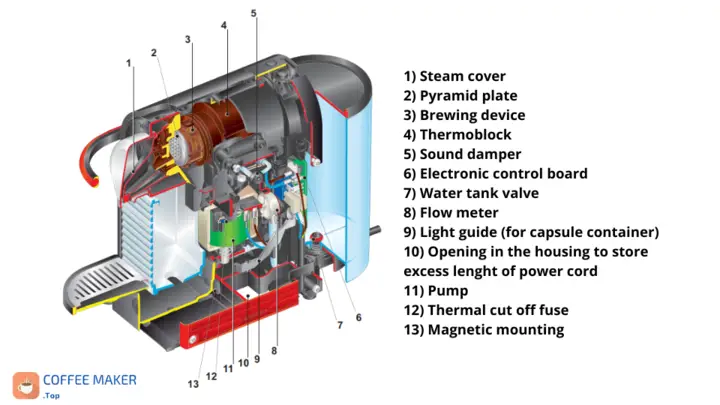
| FAILURES | COMPONENT |
| Too much noise | Pump Thermoblock Brewing device Casing Moving parts |
| No heat | Thermoblock Thermostat |
| Brews little coffee | Control board Pyramid plate |
| Low pressure | Pump Thermoblock |
| No water | Pump Water tank Internal pipes Flowmeter |
| Leaking | Nozzle Pyramid plate Brewing device O-rings |
| Capsule issues | Brewing device Pyramid plate |
| Does not turn on | Control board (capacitors) |
The Nespresso coffee maker makes a loud sound
This is not a problem or defect if we are talking about a newly purchased coffee machine. Not only Nespresso, but all capsule coffee machines are slightly noisy; they are usually around 60 decibels on average. Here is a comparative video of 7 different models.
However, if your Nespresso has suddenly started to make a very loud sound, it may be due to the wear and tear of an internal component. In the case of the Vertuo line, the cause will be a bearing that, when turning at high revolutions, will produce noise. In this video, you will learn how to replace the part.
The bearing trade reference is 6901H2RS, and it won’t cost much more than £10. You can learn more about noisy Nespresso coffee machines here.
The Nespresso coffee maker does not heat
When your Nespresso machine does not heat the water or the coffee does not come out as hot as it should, the problem can happen for two completely different reasons, which we explain below:
Firstly, if the coffees you get from your Nespresso are getting colder every day, this is most likely due to a build-up of sediment and limescale. If you prepare several coffees, getting the first coffee at a much lower temperature than the following is also typical. This limescale build-up appears in the heating element and the water circuit’s internal pipes.
The solution is simple; descale your Nespresso and clean it thoroughly. Try running several cycles without coffee and then the last one with your capsule; this way, the boiler should have had enough time to warm up.
On the other hand, if all coffees are always cold, the heating element is more likely to be faulty. Usually, the Thermoblock (which heats the water received from the tank) or the thermostat (which regulates how hot it is) have issues. See this article where we explain the problem in depth.
My Nespresso pours a too-short cup of coffee
Unlike other coffee machines such as Dolce Gusto, Nespresso coffee machines cannot vary the desired amount of coffee beyond espresso or lungo in most models. As the capsules you use are not always the same, in our opinion, it does not make sense that the amount of water that goes through it should always be the same. Fortunately, there is a solution.
Automatic coffee machines such as the Essenza, Inissia, Citiz, Pixie or Latissima can easily change the amount of water poured into the coffee. When brewing a coffee, instead of making a short press of the button, you have to keep it pressed during the whole brewing process until the desired amount of coffee is reached. The machine will save this amount in its internal memory for future coffees.

Caution: If your machine has suddenly changed the amount of coffee it serves, the above process will not help much. The chances are that the Nespresso needs descaling. When the water circuit or heating element becomes saturated with limescale, the amount of water reaching the coffee can be affected. Perform one or more descaling and see if the problem is solved.
Check this article where we talk about the issue in depth.
Nespresso coffee machines without water pressure
When a coffee machine loses water pressure when brewing coffee, this is usually caused by excessive calcification. Sediments and limescale are deposited in the internal pipes of the coffee machine, preventing the normal circulation of water (and, therefore, the coffee from coming out). One or more descaling operations can solve this issue.
A completely different situation is if your Nespresso coffee machine has no pressure, i.e. no or very little water comes out. In this case, it is most likely that the pressure pump has broken down. In these situations, you must disassemble the coffee machine and check the pump to ensure it is good. If it is faulty, it should be replaced.
When you disassemble the machine, you should look for a pump like the one in the picture below, Write down the characteristics of the pump and look for a replacement on the internet.
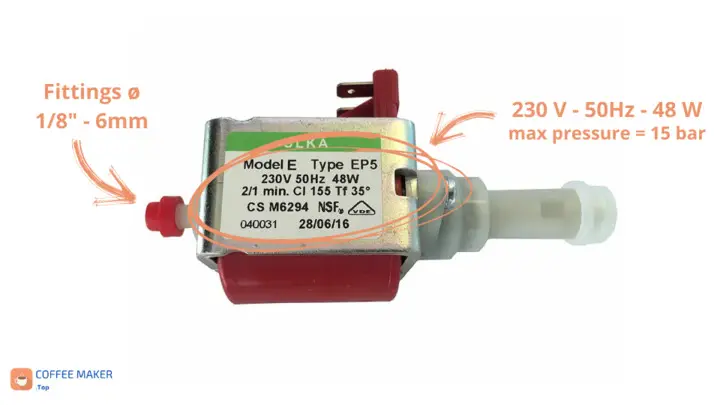
Here is a full article dedicated to this issue.
The Nespresso coffee machine does not pierce the capsules
And speaking of piercing, we have one of the most common problems here. When your Nespresso coffee maker doesn’t pierce the capsules or pierces them badly, coffee can’t come out (or it will come out in minimal quantities). If your coffee maker doesn’t break the capsules, you can do two things:
- Check the punch needle. Sometimes it bends or breaks, and since it’s such a small item, we don’t realise it until the coffee extraction fails.
- Use official Nespresso capsules. You may not know this, but the latest models of Nespresso coffee makers have an anti-compatibility system that bends or disables the single pods in case they are not the official Nespresso pods.
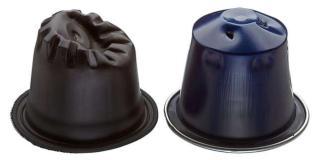
The Nespresso coffee machine light is flashing
Nespresso coffee machines communicate to the user what state they are in; it is done through their lights. But, when a Nespresso machine starts flashing its lights, it isn’t easy to understand what is happening unless you have the service manual or a specific guide like this one at hand:
NOTE: Hold the buttons for 5 seconds to exit the flashing mode or remove the decalcification warning.
The Nespresso coffee machine does not work
Another common fault is that your Nespresso machine will not start; you plug it in, press the button and nothing. In the best-case scenario, the LED lights on the button flicker slightly, and then the machine switches off completely, but no coffee comes out of the Nespresso machine.
If this happens to you, we have two pieces of news: one good and one bad. The bad news is that your Nespresso machine has a faulty control board, but the good news is that the repair is simple.
Almost all starting-related problems in coffee machines are caused by a faulty or damaged capacitor (main or auxiliary). It is a very cheap component that you will find in any electronic parts shop or online. All you need to do is disassemble your Nespresso coffee machine and replace it. This video explains how to replace it.
This solution can be applied to almost all Nespresso coffee machines and even to other coffee machines of different types or brands, as they all have similar electronic boards. If you need to disassemble a Krups coffee machine, you can take this section as a reference.
The Nespresso coffee machine loses water
It is common to many single-dose coffee machines and one that we have already dealt with more extensively here: my Nespresso coffee machine is leaking water. There can be several causes of your Nespresso machine leaking water, so we recommend reading the full post.
Hint: if your Nespresso machine leaks water from the tank, the connection between the tank and the body of the coffee machine will usually fail.
My Nespresso machine does not pour water
The opposite of the above: the coffee machine switches on and works well, but no water comes out when the button is pressed. Possible solutions:
- First, ensure that the valve at the base of the water tank is working; to do this, fill the tank and press upwards with your finger, as shown in the image.
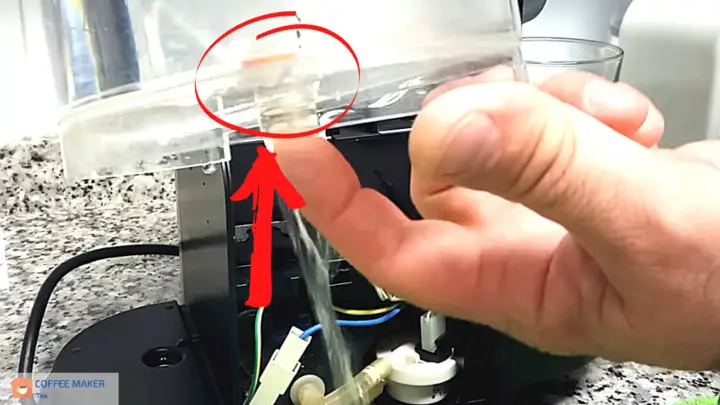
- Secondly, ensure that the tank fits perfectly into the base of the coffee machine because small maladjustment can cause the base valve not to be connected to the circuit, and there is no way to circulate the water from the tank to the inside of the machine.
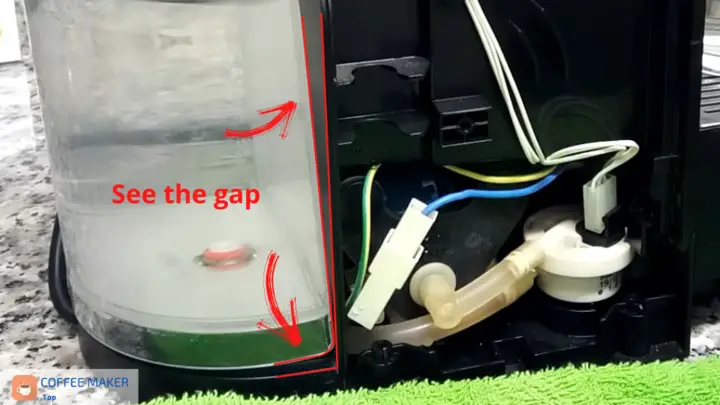
- Third, remove the side of the brewer to access the internal water pipes and check that there is water in them. If the machine has been standing for a long time, this water may have evaporated, and the pump will not work. It would help if you disconnected the pipe at the pump inlet so the water can refill all the pipes and then connect them back.
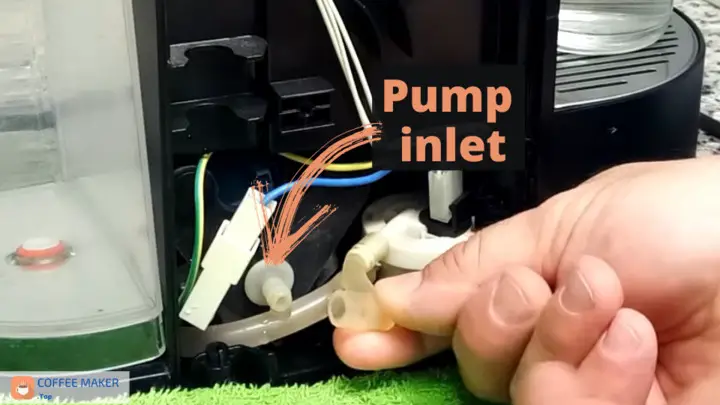
- The fourth and less likely possibility is a failure of the pressure pump that pushes water through all the machine’s pipes. In this case, you will have to disassemble the coffee machine further to get to the pump and replace it.
Check here for a complete article about this issue
My Nespresso coffee machine leaks
Dripping in Nespresso coffee machines is a classic Nespresso problem. If your Nespresso coffee machine drips from the top when making a coffee or just after, it is probably due to an excess of coffee residue.
Be aware that it is not your fault because to clean this area; we have to disassemble part of the head, which is not usually done during normal maintenance.
In the carousel of images below, we show how a Nespresso Essenza leaked a lot of water from the head and how after disassembling and cleaning it, the coffee machine works as if it was brand new. If, after cleaning, the coffee machine is still the same, I’m afraid you will have to do a more thorough cleaning by removing even more parts or replacing the entire head.
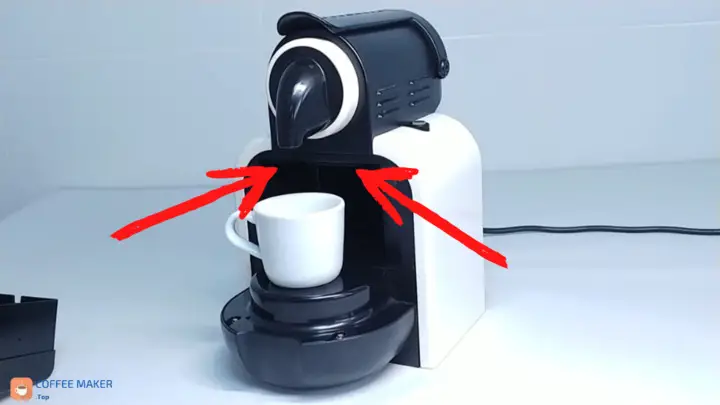
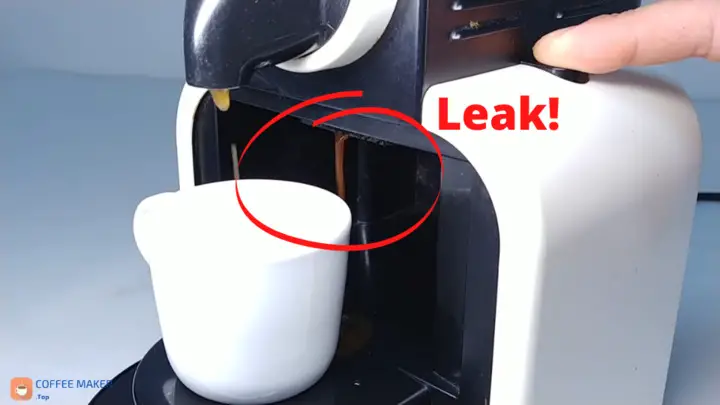
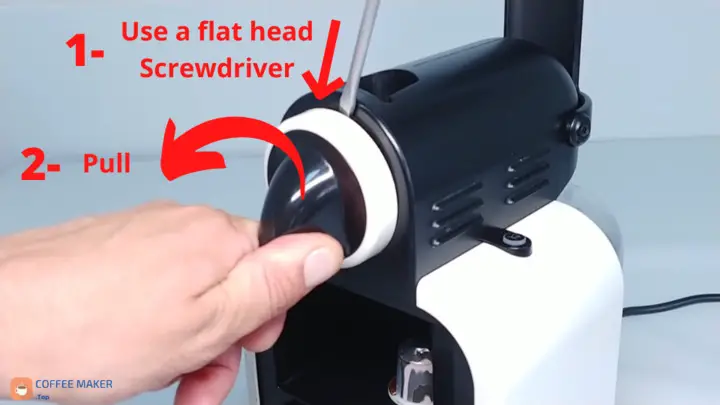

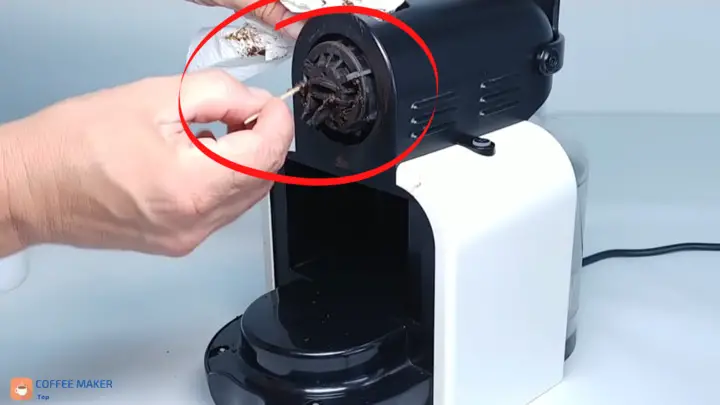
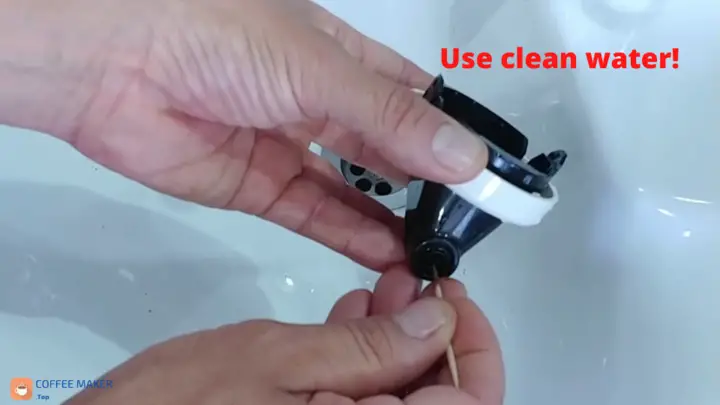
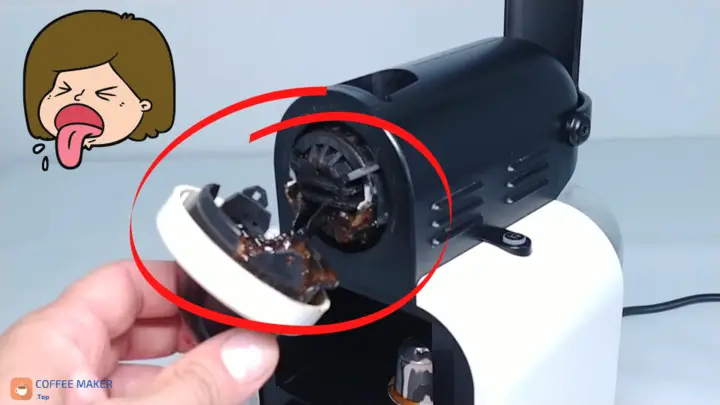

In some cases, it has been observed that the problem lies in how the machine punctures the capsules. Sometimes the problem is in the nozzle (a small needle used to pierce the capsules and at the same time inject water into them).
It may have broken or bent a little with use, which causes the water not to flow properly and your Nespresso machine to drip during or after coffee preparation.
Here we have a complete article about this issue
How do I reset the Nespresso coffee machine?
Resetting the Nespresso coffee machine is a simple process, consisting of returning the volume buttons’ settings (lungo and espresso) to the factory settings. Many Nespresso coffee machines allow you to define and customise the settings (amount of water) used for traditional espressos and lungos.
To reset your Nespresso machine to factory settings, press the lungo and espresso buttons to switch off the coffee machine. Then press and hold the lungo button for 5 seconds. When the LEDs flash three times, you have to reset the settings.
As you can see, the Nespresso lungo coffee is good for more than just waking you up in the morning.
Nespresso coffee machine: Stuck capsules
It is similar to the one we discussed in this article for Nestlé’s other coffee machines: My Dolce Gusto lever is stuck.
Of course, the solution is also similar: never force the lever or try to pull the stuck capsule out of your Nespresso. Chances are you will end up breaking something or damaging the mechanism. If your Nespresso machine does not open, be patient and gentle.
*If you find it too stuck after removing the capsule with your hands, try brewing several coffees with the coffee pod. Often the dried coffee residue acts as a glue, which softens with water.
Does the Nespresso machine make chocolate?
The Nespresso machine does not make chocolate, herbal teas, lattes or anything else. If you use the official Nespresso capsules, Nespresso machines only make espressos and americanos. Some more complete models have a separate tank for milk, which can make cappuccinos and other milky drinks.
So don’t try to pour milk into the machine’s tank or similar nonsense because it won’t work, and you will most likely damage your machine.
Can I pour milk into the water tank?
No. Never. We don’t know why many users persist in this madness against single-serve coffee machines.
Let’s be clear: Nespresso machines (and any other espresso machine) work with water and are designed to work with water. Milk has fats, sugars and a host of other qualities that will cause residues and unexpected consequences when passing through the internal circuit of the coffee machine. And another thing: have you ever stopped thinking milk has a different boiling point than water?
